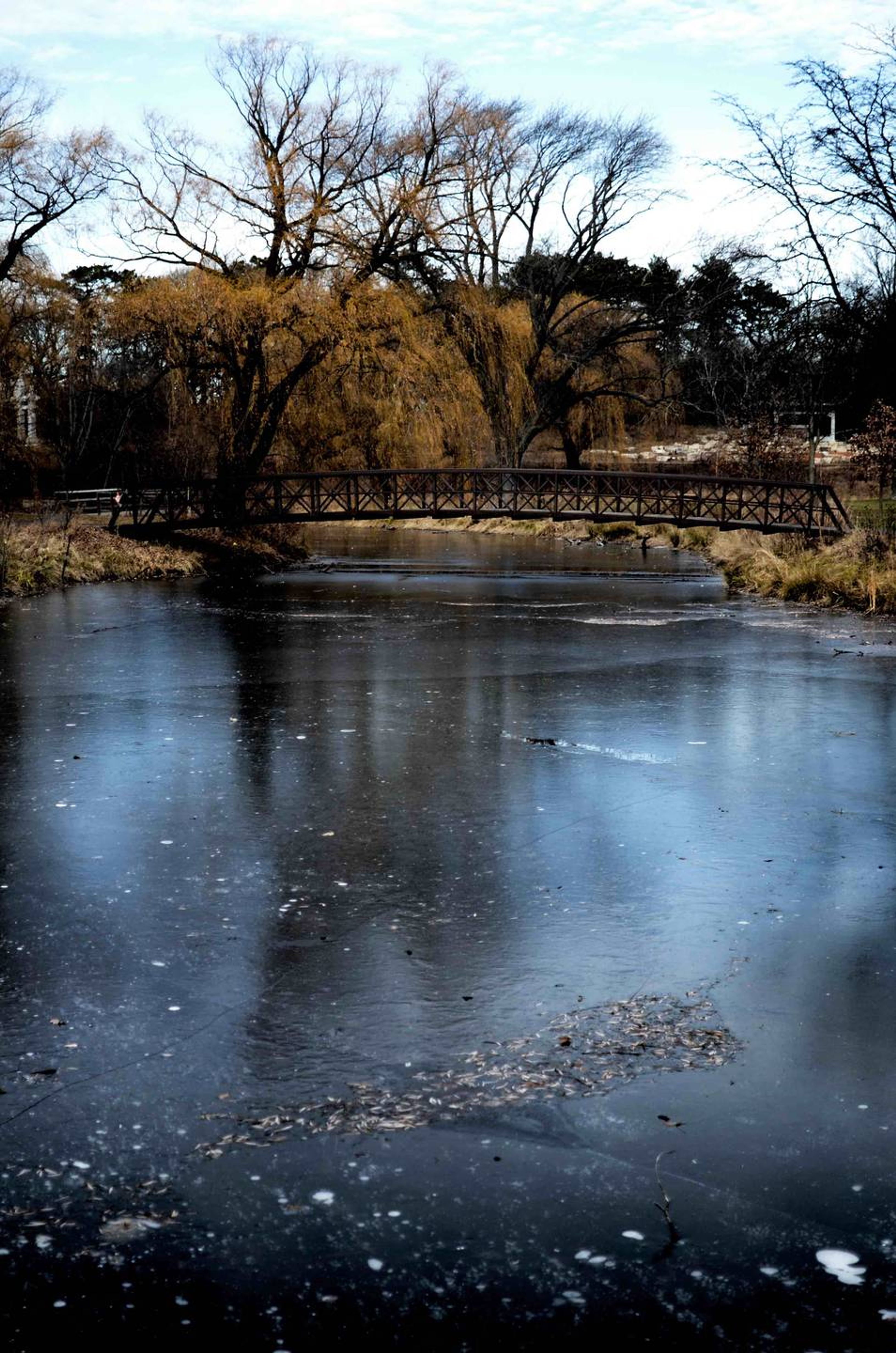Minnesota's First Accused Murderer Is a Familiar Name in Saint Paul
A lake, a street, a creek and a park bear his name.

This isn't a screenplay, but it could be.
In the opening scene, a man - who was born in Derry, Ireland, in roughly 1811 - appears at a dock. He's boarding a vessel that will bring him to the new world. The current year is 1835, and the man emigrates to Minnesota and serves three years in the Army. While serving at Fort Snelling, he befriends another soldier. This is still a couple of decades before Minnesota officially becomes a state; this is also where the story takes an interesting turn.
Before the two soldiers leave Fort Snelling, they hatch a plan to lay stake to land that has been made available for purchase in the area that is now Saint Paul. One soldier is discharged a few months before the other. According to their plan, the one discharged first is to grab some land for the other. Using the funds of the latter, the discharged soldier does what he is supposed to.
STAKING A CLAIM
The year is now 1838.
The discharged soldier claims two parcels along the Mississippi from what is now Eagle Street to the Robert Street Bridge. While the population is still small in the town that becomes Saint Paul, the area now claimed by European immigrants was once Dakota land. Perhaps there are about 20 homesteads built here and there in the wooded areas near the river.
The first soldier has achieved notoriety as a person others do not like. His military records state that he stands tall at over 6’2” with grey eyes and brown hair. The second soldier is the opposite: People like him. He’s kind and slight. The two soldiers live together in a small cabin once situated where the Xcel Energy Center parking ramp is now located.
A MAN GOES MISSING
Between April and September of 1839, the two men also farm together - until the second soldier to be discharged goes missing.
The first soldier makes it known to a few others that he has not seen the second soldier for a day, after he helped his "friend" find a group of Dakota that stole a calf.
In doing so, the first soldier claims he helped the second ferry across the Mississippi so the second could walk five miles downstream to what is now South St. Paul, but was then called Kaposia. When the second soldier arrives, he plans to confront the Dakota, get his calf back and walk the five miles back to his homestead with his livestock in tow.
This seems like a lot of work to go through to get a calf from a group of Native Americans that may, or may not, be in possession of the small cow.
After the first soldier shares this story, two search parties follow the supposed path to Kaposia, but find no trace of the missing man.
A BODY IS FOUND
Three weeks pass. Some Dakota boys find the body of a badly beaten man in the Mississippi River. The man's jaw is broken, and many bones in his face have been crushed. The Dakota boys go to Fort Snelling to alert soldiers to what they have found. Following the boys to the body, the soldiers are able to identify the body based on his grey hair and long nose.
The name of the deceased is Sergeant John Hays. The prime suspect in the case, the first soldier, is Edward Phelan. His last name is also spelled Phalen.
SEEING HIS NAME IN A WHOLE NEW LIGHT

More than 180 years later, the Phalen name can be seen as on street and park signs, a golf course and a recreation center in the Phalen neighborhood located north and east of downtown Saint Paul. Lake Phalen, of course, is also the largest lake located within Saint Paul's city limits.
Did the namesake of one of Saint Paul's most recognizable names commit the first documented murder in what would later become Minnesota? At the time, many thought so.
"It is a disgrace that the name of this brutal murderer has been affixed to one of our most beautiful lakes.” - John Fletcher Williams
One of the first people to document the early history of Saint Paul,John Fletcher Williams was definitely not a fan of naming the most important lake - and the source of much of the city's fresh water - after a man like Phalen.
AN ARREST - THE FIRST OF ITS KIND
Back in 1839, Edward Phalen is arrested for the murder of John Hays, an event that earns the likely distinction as the first murder arrest in the territory that will become Minnesota. He is held at Fort Snelling and put on the first riverboat heading downriver. He is tried in Prairie Du Chien because Minnesota is not yet a territory and Saint Paul is technically part of the Wisconsin Territory.
Witnesses come forward during the trial, claiming the two men did not get along. One of them even confesses to seeing blood and hair near the home that Hays and Phalen shared. Others discredit Phalen's account of ferrying Hays across the river to start his voyage to Kaposia to find his calf. It is also reported that the calf returned on its own a few days later. Even though the evidence seems to be stacked against him, Phalen is acquitted.
During the six months Phalen is in Wisconsin awaiting his fate, rumor spreads that a Dakota man on his deathbed confessed to the crime; however, there’s no firsthand account of this ever happening.
Phalen is set free.
Minnesota's first documented murder is also Minnesota's first unsolved murder.
PHALEN LOSES HIS LAND
While Phalen is tried in the Wisconsin Territory, he loses his original land claim. But upon his return to what is now Saint Paul, he goes on to claim more land north and east of his original acreage, along a creek that now bears his name and leads from a lake that shares the same distinction.
Later, Phalen becomes one of the "founding fathers" of the state. Despite his status as an unliked man acquitted of a terrible crime, his neighbors elect him as a delegate to the Minnesota Territorial Convention held in Stillwater in 1848. Minnesota is finally on its way to becoming a state.
In 1850, a grand jury, the first in Ramsey County, indicts him for perjury. Deciding that he'd rather leave the territory than face charges, Phalen sets off for the goldfields of California. But he never arrives. Instead, his travel companions murder him along the way, claiming self-defense.
As the others in the party continue on their way into the sunset, they leave Phalen's body behind. Roll credits.
See what I mean about this reading like a movie script?
DOES THIS CHANGE WHAT YOU THINK OF ALL OF THE PLACES NAMED AFTER EDWARD PHALEN?

If you spend any amount of time in the city of Saint Paul, then the Phalen name is likely synonymous with lovely summer days along the lake or on the golf course. If you, like me, had never given the name another thought, perhaps now you’ll think of these spaces a little differently. Perhaps you’ll think of Minnesota’s coldest case, its first murder charge, and of a man who seemingly got away with murder until he met his ultimate demise en route to making a fortune of gold.

Paul Nelson and Gary Brueggemann's research and writings are key sources for this article.
To learn more check out this excellent podcast.

Phalen Regional Park is a jewel. The paved path around the lake is framed with oaks. The golf course makes the park seem larger than it already is. Located near the heart of St. Paul Phalen Regional Park offers a great escape, plenty of space, and an opportunity to stretch your legs.


This story is made possible by the Arts and Cultural Heritage Fund and the citizens of Minnesota.
It’s known as the Sandy Lake Tragedy, but that makes it sound like an accident. In more realistic terms, it’s about as awful a story as one could find. Carefully planned cruelty. Brazen inhumanity. Willful neglect. Corruption from the White House to our (pre-) statehouse. It’s an act of brutality so horrible that it shocked the nation and triggered a wholesale restructuring of Native American lives across the country to this day. It happened right here in Minnesota, and you probably don’t know anything about it. It also involved another notable Minnesota name: Alexander Ramsey, who committed a heinous crime no one knows about.
Nestled along the often fiery shore of Lake Superior sits the Gilded Age mansion Glensheen, a monument that beckons tourists and day-trippers through its heavy oak doors to learn more about how the other half lived in a never-ending maze of ornate rooms. But in 1977, the home was also the site of two vicious murders in an elaborate plot that implicated the Congdon heiress's adopted daughter, Marjorie, and Marjorie's then-husband Roger Caldwell. Explore the timeline of events.
